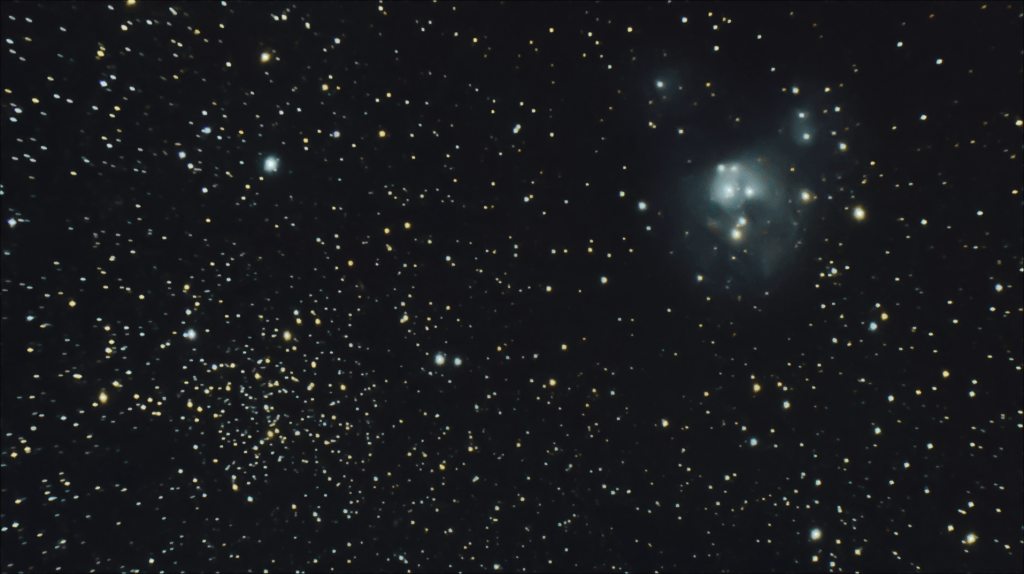This is my wide-field telescopic image of the dusty reflection nebula NGC 7129 (right) paired with the open star cluster NGC 7142 (left) in the constellation Cepheus. Despite being separated by only half a degree of the sky, the dusty nebula NGC 7129 is about 3000 light-years away, while the open cluster NGC 7142 is over 6000 light-years away. NGC 7129, with its bright stars, is only about a few million years old (!), but NGC 7142 is probably much older.
This is my first astrophotograph using my new Explore Scientific ED 102 mm apo f/7 refractor. I picked this target because I’d just recently seen this beautiful image on APOD; I was also interested to see if I could capture star colours better with this new telescope and these targets presented a busy star field; and I was interested to see what the coma* would be like using a 0.5× reducer without a flattener. My camera is an Altair GPCAM3 290C, which has a small sensor, so I wondered if I woud get away with using the Altair GPCAM 0.5× reducer without any flattener. It seems not…
It turns out that coma are a problem in the corners and towards the left and right edges. But there is a central square with edge dimensions of the height of the sensor in which the coma are barely noticeable. I will probably add the Explore Scientific 0.7× reducer/flattener at some point, but not yet.
I should crop the coma in this image out really but it really seems a shame to me to trim this beautiful star field down, even with coma present.
*An optical artefact produces coma, which are distorted streaky stars away from the focal axis. It’s because the camera sensor is flat but the focal surface is spherical, so the corner stars are slightly out of focus. A ‘flattener’ is needed to correct for this if the effect is pronounced. Sometimes a reducer/flattener are both part of the same package.
Frames
- 62× 120-s light frames
- 25× dark frames
- 31× flat frames
- 31× dark flat frames
- 107× bias frames
Equipment
- Explore Scientific ED 102 mm apo f/7 refractor
- Sky-Watcher EQ5 PRO SynScan GOTO equatorial mount
- Altair GPCAM3 290C colour camera (with UVIR window fitted)
- Altair GPCAM 0.5× reducer (fitted to the nosepiece of the GPCAM3 290C)
- Altair 60mm guide scope
- Altair GPCAM2 AR0130 mono guide camera
Software
- SharpCap Pro
- PHD2
- DeepSkyStacker
- Photoshop


